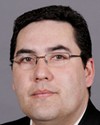Many aboriginal women do accept this responsibility, but in order to exercise that responsibility to the fullest, they must have a voice regarding the educational opportunities that should be available in all the communities in which they live. This would be their way of ensuring that not only the curriculum content but also the pedagogy and/or andragogy are culturally appropriate, as well as reflecting their needs and priorities.
NWAC fully subscribes to the philosophy of lifelong learning. We know that to succeed in life, one needs to continually update skills, challenge one's own belief system, self-assess abilities, and expose oneself to current thinking.
One of the reasons lifelong education has become so important is the acceleration of scientific and technological progress in today's society. Despite the increased duration of primary, secondary, and university education, somewhere between 14 and 18 years, depending on the area of the country, the knowledge and the skills acquired are usually not sufficient for a professional career that spans three or four decades.
Basic supports. For aboriginal women, access and increased integration into lifelong learning initiatives are essential. However, basic supports are just as vital as the access itself. This is particularly the case for single-parent women, low-income families, and those living in rural, remote, or Arctic communities. Essential environmental supports include affordable housing for aboriginal women, with a priority for single parents on and off reserves; adequate funding for basic living expenses as well as educational resources and technological hardware; and safe, reliable, and accessible child care facilities.
Aboriginal women, for too long, have had to make the choice between providing for their families in low-paying jobs or struggling and going without to make ends meet while they continue their education. In fact, many aboriginal women living in poverty not only have to look after themselves but also must care for elderly parents, raise children, and/or tend loved ones who are in ill health, often with only a single income. These living conditions are not the best for furthering self-esteem and for achieving educational goals.
Rather than having to make this choice, positive steps are needed for creating a learning culture in aboriginal communities. Providing meaningful support can challenge even those most reticent in continuing their education or skills development. A relationship/partnership model brings together aboriginal and mainstream communities for a wide range of community partnerships to support lifelong learning needs. It would encourage a lifelong learning trend and fill the gaps for those who require upgrading and/or skills development.
Curriculum research and development. This area must prioritize aboriginal culture and recognize the traditional learning methods and tools that are used by aboriginal people. Educational programs, from kindergarten to post-secondary levels, must be enhanced with accurate historical aboriginal content and appropriate cultural teachings. Aboriginal women must be integral to the research, the design, the development, and delivery of curriculum in all institutions. Greater emphasis is required to incorporate within aboriginal curriculum the traditional roles of aboriginal women within the community. Further, gender equality issues and teachings on positive relationship-building between men and women and in family life is an urgent priority.
Additional gender-specific research is greatly needed to determine all aspects of lifelong learning initiatives. Other options could explore learning, with accreditation in the workplace, allowing programs to integrate work practicum with advancement opportunities for women. These approaches provide the flexibility for aboriginal women to meet their lifelong learning goals.
Sustainability and capacity-building. Aboriginal youth comprise the fastest growing segment in the Canadian population. An investment in education, skills, and training for trades will fill the gaps in the market for professionals and skilled tradespeople.
Additional ways of sustained lifelong learning include, one, giving aboriginal learning institutions priority to evolve into public institutions to enable access to funding formulae that are available from provincial governments; two, incentive programming with remuneration agreements for graduating students; and three, employment options within communities for certain terms may help to support funding and demands for human resource development.
In terms of other essential factors, the federal government must clearly articulate support and provide adequate financial resources for the transfer of jurisdiction and control of education to aboriginal-controlled educational institutions. Government policy must support aboriginal learning institutions and educational programming at all levels, whether primary, secondary, or post-secondary.
Governments must recognize that learning happens through many non-traditional methods and must provide aboriginal women with sufficient support to access these opportunities in ways that are most suitable to individual circumstances. Leading researchers acknowledge the validity of traditional knowledge for filling gaps in western and scientific knowledge.
Aboriginal women must be assured an equal role in decision-making at all levels of education, from governance to policy reform. Aboriginal women must be included in developing and maintaining partnerships among mainstream public authorities, education service providers, the business sector, different associations, guidance services, and research centres.
Education and training systems need to recognize competencies acquired not only in formal but in non-formal and informal settings. This must be established between the government and academic partners. Law and government policies need an approach to lifelong learning whereby competencies can be certified irrespective of how they were acquired. Competencies acquired through work should be assessed and potentially recognized in the same way as those acquired through formal institutions.
Federal transfers to the province and territories must be increased to support educational programming and for lifelong learning to be accessible for aboriginal people, for example, whether they live on or off the reserve.
Educational programming from kindergarten to post-secondary levels must be enhanced with accurate, historical aboriginal content and appropriate cultural teachings. Aboriginal women must be integral to the research, design, development, and delivery of the curriculum throughout all institutions.
I'm now going to move to the recommendations.
Incentive mortgage rates through CMHC or through partnerships with federal commercial banks need be made available for aboriginal people, in particular aboriginal women returning to school and achieving accreditation
Priority must be given for northern remote and Arctic communities to have access to telephone lines, Internet connections and/or hardware, and resources such as mentoring and coaching for learning at home and within the community
The federal government needs to establish learning centres for aboriginal women that respond to local choices and needs. Each centre must be provided with adequate resources to create programming that includes access to information, technology and learning facilities, self-directed and modular training, and distance learning through video conferences and community websites.
In conclusion, I would be remiss if I didn't mention the racialized, sexualized violence that aboriginal women experience all over this country. A 1996 INAC study showed that the mortality rate because of violence is five times higher for aboriginal women than it is for other Canadian women between the ages of 25 and 44. The correlation between poverty and violence has been established, and the major reason aboriginal women continue to struggle with being impoverished is lack of education. High rates of violence experienced by aboriginal women definitely have negative impacts on youth and children, and the cycles of violence keep being perpetuated.
Low education levels create poverty, and poverty often breeds violence. It is only through empowerment through proper education that aboriginal women and their roles in the family, in the community, and within their first nation can once again gain the respect that they always held in the traditional communities. Higher learning allows work within communities, which in turn achieves a higher life quality.
We trust that you recognize, as we do, that educated aboriginal women provide much-needed support for the entire family's learning, that a fundamental concept is that education of women and girls is central to the process of community development, and that the gains and advancements accomplished by aboriginal women benefit everybody.
Meegwetch.
Thank you.





